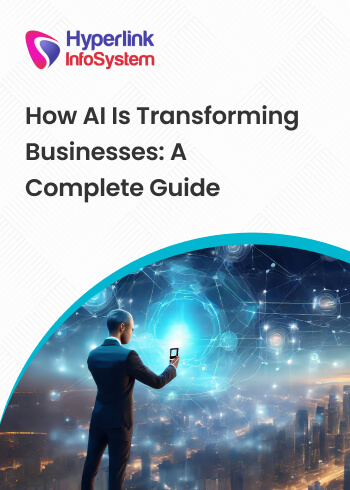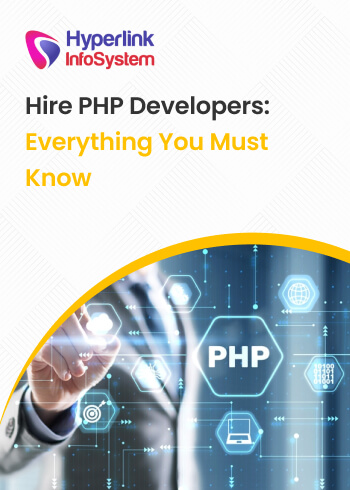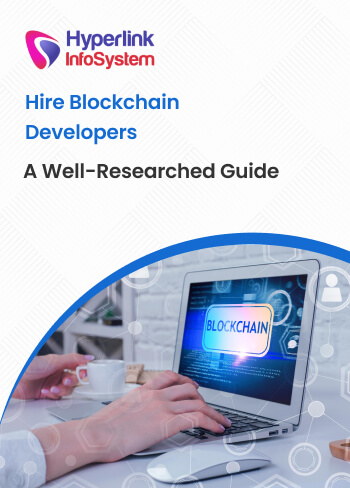The emergence of e-commerce prompted businesses to improvise their business models and adopt innovative solutions. Previously, online businesses relied on traditional payment methods such as direct bank transfers to send money over long distances.
Although these money transfer methods were highly reliable, they were not efficient enough to cater to the needs of online sellers. For instance, some customers didn’t proceed with their orders after placing orders via direct bank transfers.
At the same time, sellers dealing with high-moving stock would often complain about how the method put their businesses on hold during weekends. Similarly, if customers didn’t leave references, the store owners had to sort out the payments of each individual customer themselves.
However, with the advent of online payment gateways, the process of transferring payments became much easier. Payment gateway methods make online payment secure, accessible, and easy to use.
Payment gateways were one of the driving forces behind the rapid adoption of e-commerce on a global scale. Therefore, these money transfer systems now have a big influence over today’s digital markets.
People all over the world now use these systems for paying freelancers, purchasing goods, and paying bills online. At the same time, many online businesses now rely on payment methods to send and receive payments. For many people, using any other method than a payment gateway is complicated, inconvenient, and unthinkable.
Nevertheless, payment gateways can also be as risky as they are beneficial. Since payment gateway networks are responsible for transferring money all over the world, they are an attractive target for cybercriminals all around the world.
In 2008, a data breach in Heartland Payment Systems was responsible for exposing as many as 100 million debit and credit card numbers. This is why people online only prefer payment gateways they completely trust and avoid the ones that put their money at risk.
If you are interested in making payment gateways a part of your website, e-commerce store, or web application, consider using the best payment gateway APIs available. In this article, we will discuss the most popular and trusted payment gateway APIs in 2026.
What Is a Payment Gateway API?
APIs, in general, are software components that enable easy communication between software. They allow software developers to enhance applications by integrating new and innovative features into their applications and give their users a more enjoyable digital experience.
Likewise, a payment gateway API can help you integrate your existing digital application with a payment system through a trusted payment-acquirement network. The payment network is a robust alternative to the usually hosted checkout pages used by the majority of e-commerce businesses.
Payment gateways can help your customers to complete purchases while staying on your website. Although this may seem insignificant to some, retaining customers to your own website reduces the time it takes to complete the payment and makes the payment procedure seamless. Your customers are able to enjoy a smooth user experience.
Core Features in Payment Gateway APIs
For software developers, payment gateway APIs offer an easy solution for improving the web experience of their customers, making online payment easier, and keeping the interface under their control.
The API helps you control the user experience from the get-go. You can use the API to retrieve the payment information of the transaction and deliver it to the payment gateway provider for executing the transaction.
However, you need to look for the following core features to find a payment gateway API you and your customers can actually benefit from.
API Design
Although APIs have been around for many years, their user interface has not always been the same. Whenever a new standard is introduced, developers behind APIs adopt these changes and tweak the design to benefit both developers and application users.
Nowadays, the RESTful API design is the most common API standard for all web-based services. You can follow the
article on Tech Target to learn about RESTful APIs in more detail. When you are searching for Payment Gateway APIs, it is necessary to consider whether these APIs follow the RESTful standard.
A RESTful API is preferred for payment gateways because it makes the developer’s job easier during integration. At the same time, it ensures that the payment gateway is technology-focused and designed according to best practices. As a result, it is easier for users to trust the application for its functionality.
API Security
As discussed above, security is a significant factor for payment gateway APIs. Since payment gateways allow transactions involving cash, credit card, and sensitive financial information, they are always a target for opportunistic cybercriminals.
Potential attackers can gain full control over an HTTP response or request. Since APIs are mostly used to exchange information stored and processed in various servers, we can’t nullify the possibility of information leaks and unseen breaches.
Cybercriminals are also known to use injection and DDoS attacks to steal sensitive information and make the service unavailable. This is why you need to find out the PCI scope of the API you will be using for your payment gateway application.
Any service that is associated with the payment industry is aware of the
Payment Card Industry (PCI) compliance. The PCI scope refers to the identification of processes, technologies, and people that interact with or influence cardholder data security. In other words, it refers to the data flow of your client's account information.
Ideally, the API service you use for your payment gateway should handle the complexities of PCI compliance themselves, rather than transferring this responsibility to developers. Also, security measures in payment gateway APIs should go beyond the requirements in PCI.
You should also be aware of how the API provider secures its environment and servers. At the same time, you should know how the company trains its developers and how it makes developer procedures. Lastly, you should check what options does the API gives you for securing the user interface and whether the API has fraud protection features built-in.
(A Distributed Denial of Service (DDoS) refers to an attack where hackers block access to a service by flooding it with fake requests. [Image Source])
API Functionality
The sole reason for using a Payment Gateway API is to solve a business problem. Therefore, you should consider all your business requirements from the API before using it in your application. Although this step is a given, many developers ignore it and start using the APIs that are most popular.
Instead, they should list down all their requirements and match each of them one by one with the features offered by the payment gateway API. Unless all you needs are fulfilled effectively, don’t start using the API. If you can’t find the API that matches all your business needs completely, consider using an API that matches most of your requirements.
Ease of Use
Part of the reason why web APIs pique the interest of developers is that they are extremely convenient and easy for web application developers. Instead of making their APIs from scratch, using a pre-built API saves you from a ton of mundane work and lets you make your web application functional immediately.
Therefore, it’s best to choose a web API that is easy to integrate with your application. Furthermore, the API should be easy to test, and use; make the application up and running as soon as possible, and should not require extensive customization on your end.
Detailed Documentation
The greatest concern for developers is that most API providers do not provide proper documentation for the APIs they built. As a result, developers often struggle to understand the basics of the API and it is relatively harder to integrate these APIs into web applications.
At the same time, developers need to refer to the documentation whenever they come across a problem in their code. Therefore, if there is no proper documentation to support the API, developers will find themselves at odds when the payment gateway starts to misbehave unexpectedly.
Before you choose a payment gateway API provider, consider visiting their website and seeing their documentation. If the API vendor does not have detailed documentation, explore other options.
Advanced Fraud Protection
In payment gateway APIs, you are not only at risk of attacks from hackers but can also become the victim of API users involved in fraud. There are many payment gateway APIs that provide advanced features for fraud protection. Therefore, as long as it is within your budget, you should prefer payment gateway APIs that offer advanced fraud protection. Otherwise, you can end up with potential lawsuits from other users, penalties, and unwarranted data breaches.
Seamless Integration Across All Platforms
The payment gateway API should be able to work seamlessly with a range of offline and online platforms and tools. It should be able to streamline all your operations and work across integration types such as ERP suites, POS software, accounting software, CMS platforms, and, of course, shopping carts.
After enabling the payment gateway APIs, it’s no longer necessary to update records manually. Each time you process new sales online, the transaction should automatically mirror the tools your application is using.
Detailed Reporting
A number of API users only see payment gateways as a virtual terminals for capturing incoming transactions. These users don’t expect anything else from their payment gateway applications and systems, so they never bother to explore further features.
After setting up the payment gateway API, the application can also be used for detailed reporting. With the help of data-driven advanced reporting, it is easier to make informed decisions about your business.
Reliable Support
Although detailed documentation is a significant feature, it can also be insufficient, especially for beginners. This is why many payment gateway API providers also offer other support options for their users. You can either mail the support staff of the API personally or call them for assistance.
The 8 Most Popular and Trusted Payment Gateway APIs in 2026
Payment gateways are essential to implement core payment features in our applications. Here are the most popular and trusted Payment Gateway APIs in 2026.
1. Stripe
Stripe is a payment platform designed by some of the top payment industry experts. The company has established partnerships with other payment industries to increase its network. Therefore, the service has a diverse range of partners such as major card networks, local banks, industry associations, and even the
W3C.
The platform offers its users a developer-centric experience and enables them to implement its RESTful payment gateway APIs in their applications. As a result, users are able to rapidly build production-ready integrations. What’s great about the API is that it provides users with modern tools such as real-time webhooks and React components.
At the same time, with the help of Stripe’s developer platform, developers don’t need less maintenance for legacy systems. Therefore, they can dedicate more time to application experiences and core customers.
Similarly, the platform also localizes the API charges and payments according to the customer’s preferred currency. This helps the API users to streamline the sales pipeline and prevent conversion costs.
Unique Features
-
Detailed reporting and insights
-
Multiple payment options
-
PCI compliance
-
Secure payment processing
-
Customized checkout experience
-
Localized transactions
-
Custom UI Toolkit
-
Invoice
-
Open-Source Plugin
-
Mobile Customer Interface
-
Authorization
-
Dispute Handling
-
Accounting Integrations
-
Unified Payout
-
Payout Timing
-
Roles and Permissions
-
Collaboration Notes
2. PayPal Payments Pro
PayPal Payments Pro is the extension of the world’s top online payment gateway - PayPal. With the service, the company successfully introduced a payment-processing service that all e-commerce users can get behind, even when they don’t have a PayPal account.
Being backed by the largest payment gateway platform means that people will have an easier time trusting your web application. The end-to-end platform offers support for credit cards while also catering to PayPal Credit and PayPal payments.
Rather than giving users a single API, the platform offers an SDK, which may contain more than one (RESTful) API, each responsible for a respective function. With the help of its open-API infrastructure, developers can use the payment gateway service in any of their shopping or marketplace solutions.
At the same time, it allows business owners to include phone-based credit card payments in their markets and also gives them a useful invoicing kit for charging consumers immediately.
Last but not least, PayPal Payments Pro also follows all the top encryption standards relevant in the industry to safeguard payment credentials. Furthermore, it is also the most extensively used international payment gateway and is available in over 200 markets.
Unique Features
-
Doesn’t Need a PayPal account
-
Custom checkout
-
Provides Quick Access to Cash
-
Seamlessly integrates with all kinds of e-commerce and sales platforms, tools, and solutions
-
Accept PayPal payments
-
Accepts Visa, Mastercard, and American Express
-
Virtual Terminal
-
Accept payments in 25 currencies from 202 countries
-
Options to simplify PCI compliance
3. Amazon Payments
Amazon Payments offers an extremely secure and payment service backed by the world's largest multiservice corporation. The payment service is available to shoppers and merchants so they can use it for streamlining their online purchases. However, the service still requires a user’s Amazon account information for completing checkouts and check-ins.
After the user logs in, the gateway system will immediately identify and helped to complete the transaction. The service is also available on mobile devices so you can embed them in mobile applications as well.
The service also offers A-to-Z Guarantee to make sure that all the transactions are 100% secure without charging any additional fees. Like most payment gateways, customers are only charged at a fixed rate for the amount they are sending.
At the same time, online merchants can benefit from the service with the help of the Amazon Payments package. The package contains a fully-featured e-commerce suite that helps merchants of all sizes to promote, sell, and manage orders and products. As a result, Amazon Payments is able to optimize its marketplace activities and convert users into reliable sellers that their customers can trust.
Unique Features
-
Improved conversion rates
-
Transaction-based fees
-
Streamlined purchasing process
-
Retail-first
-
Identity
-
Inline Checkout
-
Automatic Payments
-
Fraud Protection
-
Merchant Website Integration
4. Braintree
Braintree offers an all-in-one payment gateway solution for both developers and business owners. The platform uses a next-generation API, known as GraphQL API. Instead of having to interact with the server SDK, developers can use the API to integrate directly.
The payment gateway can perform operations such as accepting and processing wallets, cards, and local payment methods. The solution provides a single, modern integration for various solutions and payment methods. Customers can store their payment information at the checkout counter, which makes the sales pipeline smooth.
At the same time, business users can send, accept, process, and split payments sent to them. These features let them enhance business opportunities and also increase their revenue. If that wasn’t all, the service offered by Braintree is backed by its partnership with PayPal.
The best feature of the Braintree payment gateway API is that it offers a seamless checkout experience. Braintree also provides its users with significant anti-fraud options for managing risk in their transactions and detecting fraud in online payment. This helps create a safe and secure ecosystem for both customers and business owners that inspires confidence in your web application.
Furthermore, Braintree offers four separate modules to its customers to make sure that businesses and organizations of all sizes can find what they need. The first module has been optimized for donation collectors and merchants.
On the other hand, the second is made to favor online businesses and streamline payment processing for greater order management. The last two are for individuals and companies who want to connect with merchants and businesses and create revenue-making opportunities together.
Unique Features
-
Global market reach
-
Friendly drop-in UI
-
Customizable checkout flows
-
Braintree Vault
-
Excellent support
-
2-day payout
-
Easy repeat billing
-
Dynamic control panel
-
Encryption
-
Easy data migration
-
Guaranteed uptime
-
Advanced fraud protection
-
Drop-in UI
-
Customized checkout workflow
5. Authorize.Net
Authorize.Net is a payment gateway API service optimized for retail and service environments. The payment gateway platform offers its users a robust solution that aligns with order management practices and enhances the experience of online shoppers.
The service was initially developed to assist merchants in selling more products in both online and local stores. It can organize and store data and complete the work meant for full-time staff while preventing fraud in your daily transactions.
Since it is one of the pioneers of early payment gateway solutions, Authorize.Net already has a considerable market in both small and medium businesses. The prospect of having a secure payment solution that is also affordable attracts many business users.
The payment solution is given to the client as a package, including a free mobile POS app that supports both iOS and Android. At the same time, the users also receive a free kit of fraud prevention tools, as well as a free website payment seal.
Last but not least, Authorize.net also offers free support 24 hours a day, seven days a week. Developers can benefit from the knowledge of experienced professionals to build custom connections with the help of Authrize.net’s API. At the same time, you can also access a bunch of training material and tutorials on the website to make the most of this robust platform.
Unique Features
-
Robust online payment system
-
VPOS
-
A virtual terminal for manual transactions and batch uploads
-
Customer integration manager
-
Retail payment
-
Mobile payment
-
Mail/Phone payment
-
Advanced Fraud Detection Suite
-
Recurring billing
-
Customer information manager
-
E-check processing
-
Sync for Quickbooks
6. 2CheckOut
2CheckOut or we can say Verifone is an easy-to-use payment platform known for its extensive capabilities. The platforms accept both online and mobile users across the globe. At the same time, the platform localizes transactions and displays them in respective currencies and languages depending on the region you’re currently in. The streamlines the sales procedures and saves both buyers and sellers plenty of time.
Moreover, you can integrate the solution with invoicing systems and online shopping carts to make payment processing faster. Customers can also set up recurring bills for their accounts and make their own subscription plans. Lastly, the solution also keeps you safe from online threats by ensuring compliance with PCI.
Unique Features
-
Localized Transactions
-
Extensive Payment Options
-
Secure Transactions
-
Multiple payment methods
-
Inline checkout options
-
Recurring Billing
-
Create customized subscription plans
-
Level 1 PCI compliance
7. BlueSnap
BlueSnap offers a one-in-all payment solution for developers of mobile, e-commerce, and website. It offers a dedicated payment processor for both online retailers and merchants. Therefore, developers can integrate their applications with all leading shopping cart platforms and marketplaces.
BlueSnap gives extensive options to retailers for expanding their business. At the moment, the platform supports up to 100 currencies, 29 different languages, and as many as 110 payment types. You can use the service across 180 countries and automatically connect to a global network of acquiring banks for up-to-date conversion rates.
Furthermore, BlueSnap also gives its users' options such as Subscription Billing Engine. The billing engine can help users reach out to a greater audience worldwide, customize recurring billing models, and let users pay without having to enter credit card data manually.
The platform aims to give its users a develop-friendly experience. Developers can also leverage the API to build unique mobile applications. The amalgamation of such developer and retailer-friendly features is rare in the payment gateway industry.
Unique Features
-
A robust payment management suite
-
Multiple payment options
-
A built-in virtual terminal for every console
-
International e-commerce-friendly system
-
Powerful analytical features
-
Separate Merchant Account
-
Payment Processor
-
Online and Mobile Checkout
-
Invoice Payments
-
Marketplace Payments
-
Integrated Payments
-
Cross-Channel Payments
-
Intelligent Payment Routing
-
Direct Debit and Bank Transfers
-
Multi-Currency Payouts
-
Mobile Payments
-
3rd-Party Payment Plugins
-
Multi-Currency Reporting
-
Global Payments
-
Fraud Prevention
-
Managed Risk Services
-
3D Secure and PSD2 Compliance
-
Payment Tokenization
-
Global coverage
-
Secure Acceptance Web/Mobile
8. WePay
WePay is a flexible integrated payment gateway designed to support the web-based and point-of-sales requirements of software platforms, as well as distinct Omni-channels. The service allows applications to perform fast, efficient, and secure processing and onboarding.
As a result, the payment solution is able to provide software businesses with the flexibility they need to streamline their business operations. For instance, WePay allows users to personalize the online platform based on their brand and pricing structure. Therefore, it is easier for businesses to make room for native processing and promote their business model.
At the same time, WePay direct referral functionality gives the user’s customers the option to receive payments without wasting time in making Chase merchant accounts. Similarly, it gives direct users complete control over facilitating payments.
Furthermore, the platform also has extensive support for various payment channels including debit, credit, and ACH payments. Users can also choose whether they want daily, weekly, or monthly payouts.
Unique Features
-
Excellent support
-
Complete payment risk coverage
-
POS solution to boost sales Custom UX
-
Quick onboarding
-
Fast and simple integrated payments
-
Intuitive account provisioning
-
Mobile point-of-sale
-
Funds settlement
-
Transaction-level reporting
-
High-level PCI security
-
Tokenization
-
Compatibility with Apple Pay and Android Pay
-
Direct bank transfers
-
Risk API
The Global Payment Gateway Solution Market
Considering the usefulness of this technology in today’s connected e-commerce, there is no surprise that the Payment Gateway market is booming nowadays. Grand View Research reported that the Payment Gateway market was valued at as much as $26.79 billion in 2022.
If the market continues its growth at the CAGR (Compound Annual Growth Rate) of 16.43% until the year 2025, we can expect it to reach a value of $42.9 billion at the conclusion of 2026.
(A forecast of total market revenue for payment gateway solutions in the period between 2023 and 2028 [Image Source])
The penetration of the internet in society has grown rapidly in the past few years. According to the Statista report, as of April 2022, there were more than five billion internet users worldwide, which is 63.1 percent of the global population.
(The number of active social media users in the world sums up to 4.7 billion as of April 2022. [Image Source])
Naturally, the increased penetration of the internet is also driving growth for the payment gateway market, especially among developing countries.
At the same time, with the use of the internet becoming common, people are starting to gain greater awareness about the convenience of online transactions. As a result, many internet users leverage hurdle-free transactions from the payment gateway to buy goods online.
Another major reason for the growth of payment technologies is the increase in the purchasing power of Generation Z and Millennials. In the United States alone, the combined purchasing power of both these demographic groups summed up to almost
$360 billion. It is also predicted that Generation Z will comprise 40% of consumers worldwide.
Furthermore, the growth in card volume globally has increased the number of card users over time, especially in emerging countries. The consequent adoption of online payment has fueled the remarkable growth of the payment gateway market.
(A summary of the payment gateway market growth region-wise. [Image Source])
Technology is bringing rapid changes to the global payment industry. Mckinsey notes that open APIs are one of the key components that will influence the global payment industry in the future. Therefore, we can further innovation and changes in payment gateway APIs, as well.
(Innovative technologies for the payment industry in the future. [Image Source])
Key Benefits of Using a Payment Gateway API
As discussed above, the demand for payment gateway APIs has increased considerably. Businesses in all major industries rely on API solutions to deliver the requirements of their customers. If you haven’t started using one for your web application, you should start as soon as possible. Here are some key benefits of using payment gateway APIs.
Efficiency
Leveraging APIs early in your application makes your overall product development efficient. APIs help developers to decrease time and cost significantly, which is extremely necessary considering how quickly customers change their requirements.
At the same time, APIs also help developers in making scalable applications. Whenever you need to add or remove functionalities, you can do so just by adding (or removing) the relevant API from your application.
When compared to monolithic payment gateway solutions, payment gateway APIs usually have fewer bugs and result in more stable products. Furthermore, you can also enhance the internal functionality of your application with the help of APIs as well. It gives developers the chance to innovate with a number of different APIs and offers unique and new products and features by combining existing APIs.
Speed and Flexibility
Software developers know that customers are always in need of a payment service that is not only fast and agile but also available at a lower cost. Payment gateway APIs are the perfect tools for making this happen.
Applications made from API products are extremely customizable. The reason behind this is that the products made with APIs have separate front-end and back-end. As a result, it is far much easier to allocate various services in the backend structure of the software to make it more robust.
Application users have a number of different business processes. These businesses target a number of different end-users and offer services in multiple regions of the world. Therefore, it is extremely difficult to make a ready product that meets all their requirements from the very beginning.
However, payment gateway APIs can help developers overcome these hurdles and deliver tailor-made solutions to their clients. Localization features are one example of these solutions. Many APIs offer these features and enable developers to make solutions for various cohorts. At the same time, API-enabled solutions allow developers to deliver solutions quickly and launch services in a matter of days instead of months.
Scale Revenue
API-enabled payment gateways offer a number of different features and give users a smooth and unique experience of payment processing. This is why including cutting-edge payment features in your application can improve the user experience of your application.
Consequently, it can also influence the number of people that use your application. With increasing demand, the valuation of your application will be higher and you will be able to monetize your product in a more effective manner.
Ecosystem
When you start using API-enabled gateways even if it is at the early stages, it can make a stable foundation for other API features. As a result, it is easier for you as a developer to build on top of existing APIs and create more innovative solutions on top of them.
It only has the potential to improve the functionality of your application but also encourages other developers to join your venture and add to the existing framework. While the initial team of software developers enhances the core features of the application, other developers can explore corridors of innovation.
Globalization
Web applications are consumed globally and therefore need to cater to customers from all corners of the world. As the business of your client expands, it becomes essential to incorporate payment methods for various different regions, currencies, and languages.
Payment gateway APIs enable your application to connect to foreign currencies, and banks, and offer services in a localized manner. Since payment gateway APIs help you target various markets at once, they can give your client global recognition.
Good Economics
Even if your client is not expanding his or her business internationally, using a payment gateway API makes good business sense. Considering the impact payment gateways can have on conversion rates is nothing compared to the fees you pay to use them.
Multiple Options
The payment industry has evolved over a long period of time so it has a ton of options for online buyers and sellers. However, it is difficult to incorporate all these different payment methods without having a single and unique application for all of them.
With that said, many top-tier payment services offer solutions that have capabilities of both merchant accounts and payment gateways. As a result, you always have a robust and flexible solution against all the payment options your customers use.
These hybrid solutions normally cost less for the initial setup and have fewer monthly charges. However, they charge users higher than normal for each given transaction. Therefore, many small businesses usually begin with a combined payment provider like Stripe or PayPal.
On the other hand, larger online businesses need individual merchant accounts to minimize their overall costs. Payment gateway APIs give you the option to use either of the options according to your given requirements.
Conclusion
Payment gateway APIs make payment processing easier and are the driving force behind the majority of innovations in the payment industry. In order to meet a client’s requirements, developers need to balance the cost and benefits of each individual payment gateway API. After evaluating the client’s needs thoroughly, developers should choose the option that offers the most useful features at a relatively lower cost.
Regardless of which vendor you choose, using a payment gateway API will reap you enormous benefits. Ultimately, you will be able to develop secure applications, establish strong relationships with third parties, contribute to the web application ecosystem, and most importantly, win over a greater number of clients.
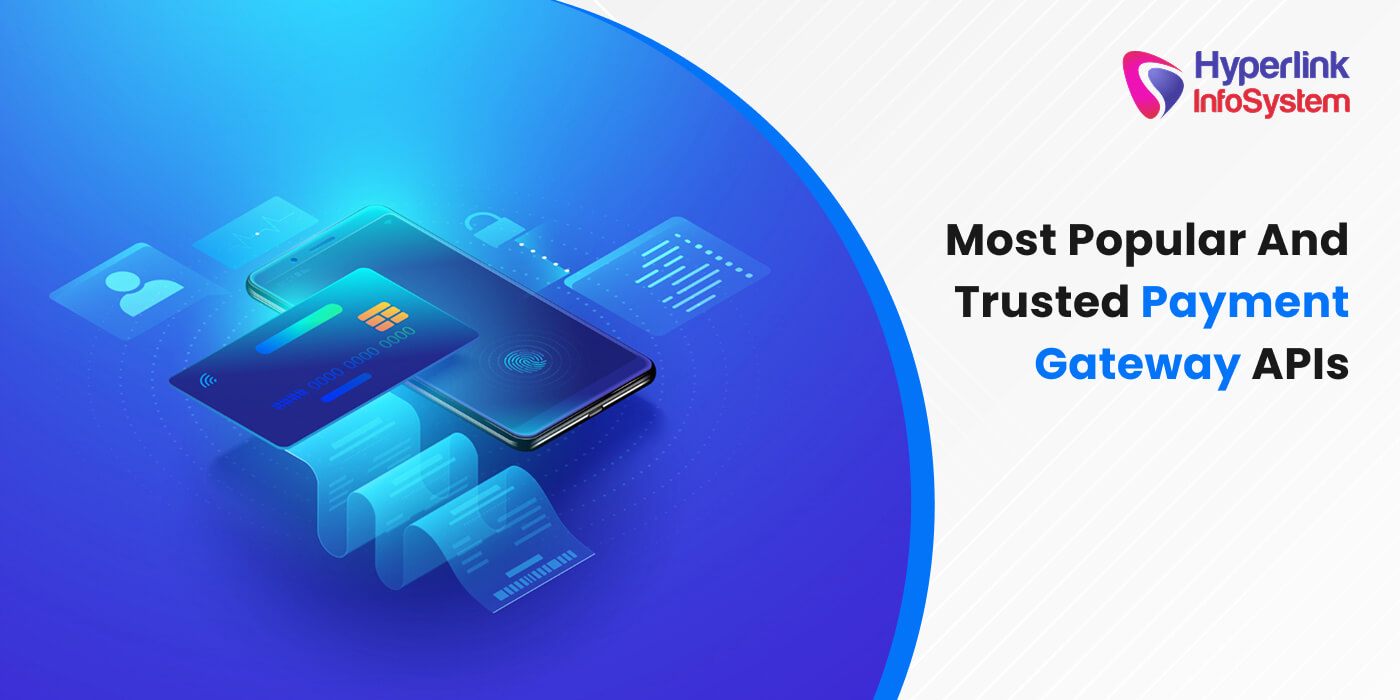




.png)


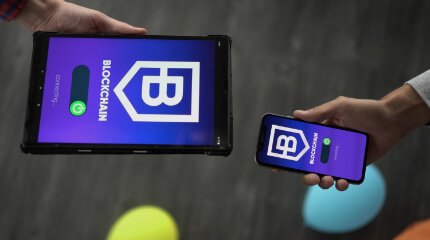
















 Next
Next
